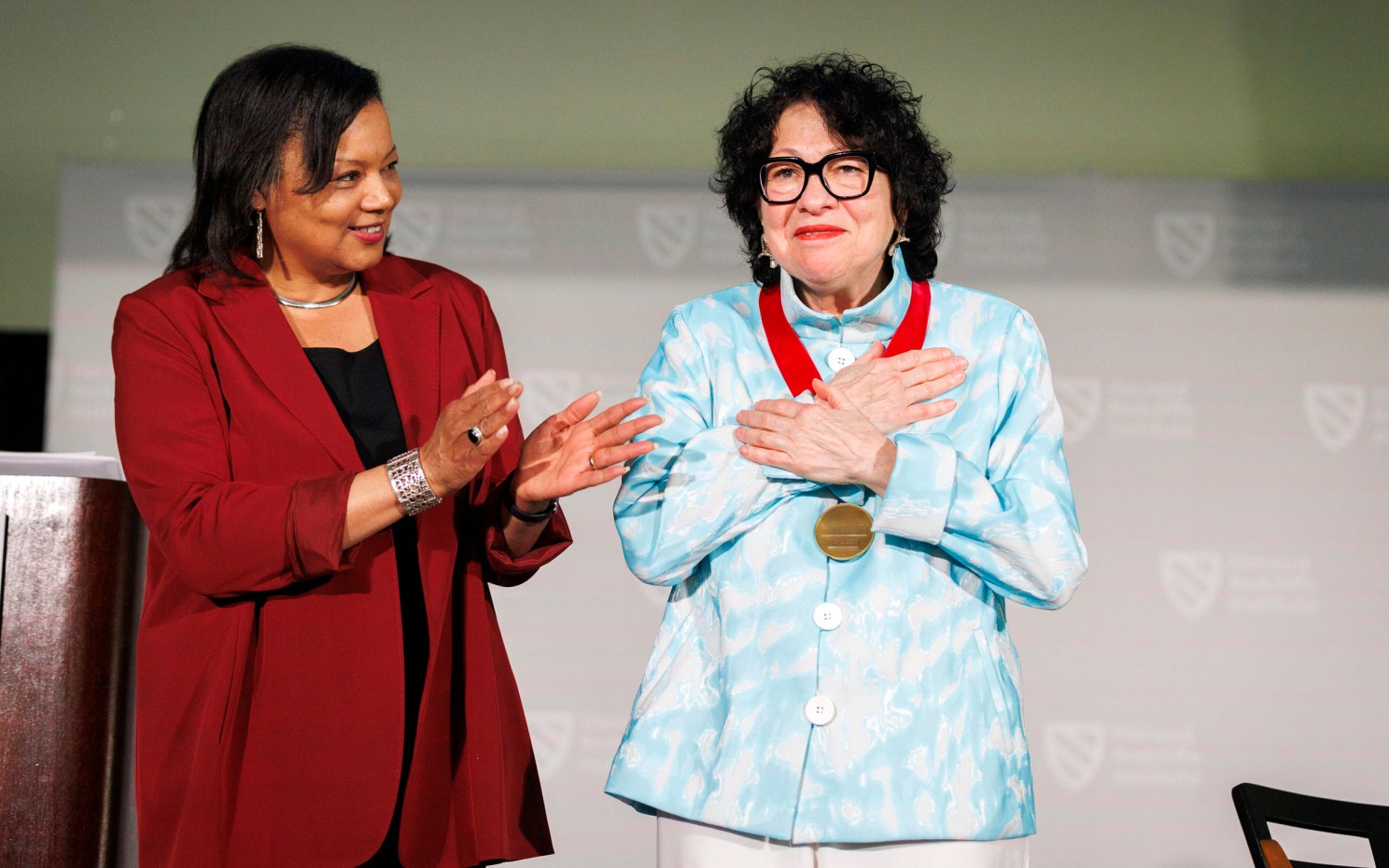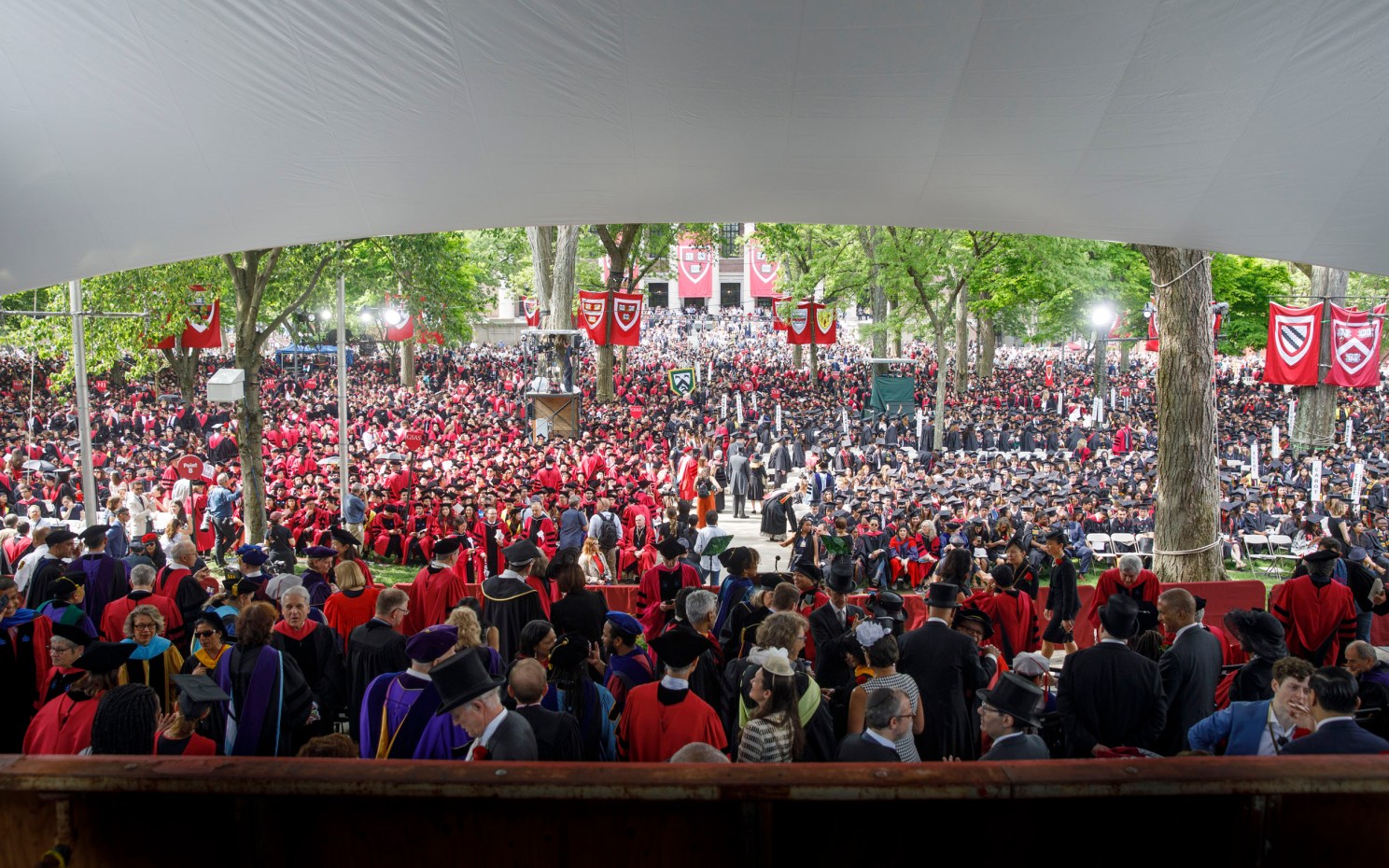‘You can solve anything’
Priyanka Pillai wants to take on big problems — and has learned how good design can help

Niles Singer/Harvard Staff Photographer
Part of the Commencement 2024 series
A collection of stories covering Harvard University’s 373rd Commencement.
Growing up in India, Priyanka Pillai witnessed the immense and varied struggles many impoverished people faced in their daily lives, such as getting prenatal care and protecting children from labor exploitation.
As an undergraduate in Bangalore studying industrial design, she wondered whether good design could help ease at least parts of these and other challenges. She came to Harvard Graduate School of Design two years ago and got her answer, discovering she could take on big problems “that you don’t even realize … could be tackled with design.”
Pillai wanted to do something to help address the refugee crisis in Uganda for her independent design engineering project. Those projects span two semesters and call for students seeking a master’s in design engineering (a joint GSD and John A. Paulson School of Engineering and Applied Sciences program) to identify complex, real-world problems and develop solution prototypes.
“For the first time, I truly felt like I was doing work that was very in touch with what GSD wants people to do, which is working with communities.”
Conducting fieldwork in Uganda, Pillai saw the difficulties that South Sudanese refugees were having reuniting with their families. The plight of those fleeing the ongoing civil war in the northeast African nation has become one of the largest refugee crises in the world, with more than half a million living in Uganda alone, mostly in camps.
More than 60 percent are children separated from parents who are looking for them, Pillai said, and need multiple layers of support. While non-governmental organizations (NGOs) are providing some assistance, much more help is needed.
“One thing that really stood out was agency. There’s currently a lack of agency when it comes to finding their family members on their own,” said Pillai, who graduates later this month. Many refugees use informal, ad hoc methods such as phone calls, WhatsApp, and photo sharing to try to find relatives.
“The second part, which is extremely critical, is that we need to move from a Western-centric way of finding a family member,” such as cataloguing names, ages, and date of separation done by NGOs, because it doesn’t capture vernacularor local geography, vital details that may speed up reunification, she said, noting that learning more about how to design for “the Indian context” and the Global South more generally was a key reason she came to Harvard.
“A lot of cultural nuances were missing in connection to the data to find missing family members,” she said. “And that’s the kind of solution that we’re moving toward.”
Given the ubiquity of cellphones there, Pillai and classmate Julius Stein designed and built an online platform for refugees to enter information about themselves using text, photos, and audio. The platform generates a series of questions that can lead to possible matches while minimizing the risk of exploitation by malign actors.
“For the first time, I truly felt like I was doing work that was very in touch with what GSD wants people to do, which is working with communities,” she said. “It was just a life-changing experience.”
Earlier this month, one startup Pillai is involved in, Alba, won an Ingenuity Award as part of the Harvard President’s Innovation Challenge. The team designed a special wipe so the visually impaired can better detect when their menstrual period has begun without relying on outside assistance.
In 2023, Pillai was part of a student project that won gold in the Spark International Design awards. The design team created Felt, a haptic armband that turns sound and visual clues into movement. The device assists people who are deaf blind to independently catch emotional nuances or subtexts in conversations, which often get lost in Braille or other translations.
During her time in the program, Pillai also jumped at the opportunity to take courses at the Harvard Kennedy School, Harvard Law School, and Harvard Graduate School of Education to learn more about things such as accessibility, ethical design, and negotiation.
“I knew that I was limiting myself because I didn’t know all these different things,” she said.
When not focused on her own studies, Pillai has been a teaching fellow for a design studio at GSD and at SEAS for a course led by her IDEP adviser, Krzysztof Gajos, Gordon McKay Professor of Computer Science.
“I love teaching,” she said. “It’s one of my favorite experiences.”
Reflecting on her time at GSD, Pillai has been deeply inspired by the faculty and her fellow students. This group from many different backgrounds with different interests and perspectives, working in many different disciplines, has been like a “dream” design studio where she’s been able to share and borrow ideas and practices from others and see how other fields look at things such as collaboration, sustainability and accessibility. It has been intellectually liberating to experience such fearlessness, she said, after years of feeling so “constrained” in her prior practice, which had been “rooted in ‘realistic goals.’”
“People tackling very huge issues that you don’t even realize 1) is a problem that could be tackled with design, and 2), they’re almost your age and they’re doing it somehow. That was very important to see,” she said.
“People really think that you can solve anything.”







